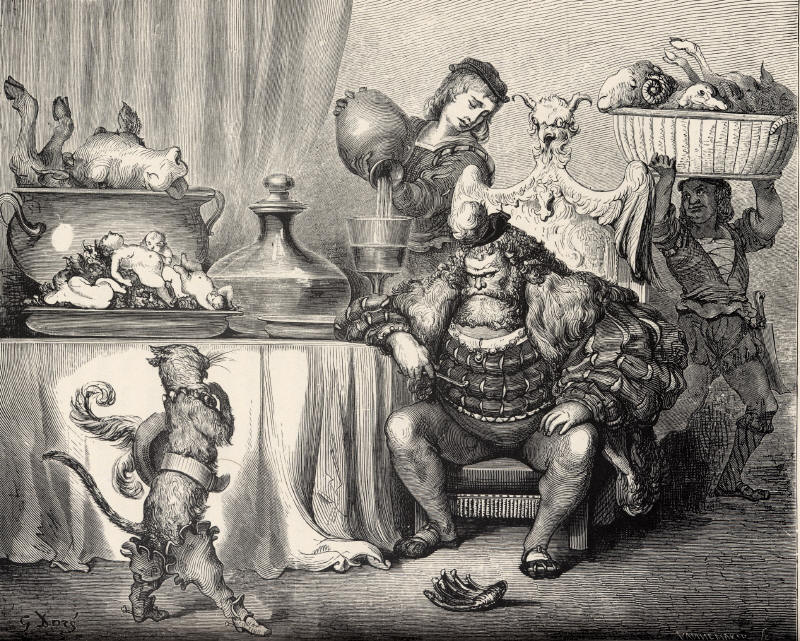|
Ogresuchus
''Ogresuchus'' is an extinct sebecid known from the Upper Cretaceous (Maastrichtian stage) Tremp Formation in Spain. It is the oldest known member of the Sebecidae and it is also the only known Mesozoic sebecid. The type species, ''O. furatus'', was named in 2020. It was a small crocodilian, measuring long and weighing about . Discovery and naming The holotype was discovered in July 2013 at the Mirador del Cretaci site, but it was stolen before palaeontologists could excavate it. After several weeks of searching, the Mossos d'Esquadra Historical Heritage Unit tracked down the stolen specimen and the thief was promptly arrested. The holotype was in a rather precarious state of conservation until it was correctly prepared several years later. It was named ''Ogresuchus furatus'' in 2020 and the holotype is now on display at the Coll de Nargó Dinosaur Museum (Dinosfera). The generic name means "Ogre crocodile", referring to its possible diet of infant sauropod Sauropoda (), ... [...More Info...] [...Related Items...] OR: [Wikipedia] [Google] [Baidu] |
Sebecidae
Sebecidae is an extinct family of prehistoric terrestrial sebecosuchian crocodylomorphs, known from the Late Cretaceous and Cenozoic of Europe and South America. They were the latest surviving group of non-crocodilian crocodylomorphs. The oldest known member of the group is '' Ogresuchus furatus'' known from the Upper Cretaceous (Maastrichtian) Tremp Formation (Spain). Other records of the group are known from the Eocene of Europe. Sebecids were diverse, abundant and broadly distributed in South America (mostly in Argentina, Brazil and Bolivia) during the Cenozoic, from the Paleocene until the Middle Miocene. The youngest known sebecids identified as cf. ''Sebecus'' sp. are reported from the Late Miocene-Early Pliocene strata of the Dominican Republic. This group included many medium- and large-sized genera, from ''Sebecus'' to the giant '' Barinasuchus'' from the Miocene. They are thought to have served as apex terrestrial predators of their ecosystems. Phylogeny Juan Leardi ... [...More Info...] [...Related Items...] OR: [Wikipedia] [Google] [Baidu] |
Mirador Del Cretaci
Mirador del Cretaci, also known as El Mirador, is a paleontological site in Catalonia, Spain. Mainly found at the site are fossils of dinosaur footprints, eggshell fragments and bone fragments, although the partial skeleton of the sebecid crocodyliform ''Ogresuchus'' is also known from this site. History The Mirador del Cretaci site was not identified until the mid-20th century when a group of French, Dutch and German scientists traveled to the area to study the geology of this region. Sometime before their arrival in the region, the area had been partially looted and some of the looted fossils ended up in the collections of museums around the world - the rest were probably sold on a black market. The Coll de Nargó Dinosaur Museum Coll (; )Mac an Tàilleir (2003) p. 31 is an island located west of the Isle of Mull and northeast of Tiree in the Inner Hebrides of Scotland. Coll is known for its sandy beaches, which rise to form large sand dunes, for its corncrakes, and fo ... [...More Info...] [...Related Items...] OR: [Wikipedia] [Google] [Baidu] |
Maastrichtian
The Maastrichtian ( ) is, in the International Commission on Stratigraphy (ICS) geologic timescale, the latest age (geology), age (uppermost stage (stratigraphy), stage) of the Late Cretaceous epoch (geology), Epoch or Upper Cretaceous series (stratigraphy), Series, the Cretaceous geologic period, Period or system (stratigraphy), System, and of the Mesozoic geologic era, Era or Erathem. It spanned the interval from . The Maastrichtian was preceded by the Campanian and succeeded by the Danian (part of the Paleogene and Paleocene). It is named after the city of Maastricht, the capital and largest city of the Limburg (Netherlands), Limburg province in the Netherlands. The Cretaceous–Paleogene extinction event (formerly known as the Cretaceous–Tertiary period, Tertiary extinction event) occurred at the end of this age. In this extinction event, mass extinction, many commonly recognized groups such as non-avian dinosaurs, plesiosaurs and mosasaurs, as well as many other lesser-kn ... [...More Info...] [...Related Items...] OR: [Wikipedia] [Google] [Baidu] |
Upper Cretaceous
The Late Cretaceous (100.5–66 Ma) is the more recent of two epochs into which the Cretaceous Period is divided in the geologic time scale. Rock strata from this epoch form the Upper Cretaceous Series. The Cretaceous is named after ''creta'', the Latin word for the white limestone known as chalk. The chalk of northern France and the white cliffs of south-eastern England date from the Cretaceous Period. Climate During the Late Cretaceous, the climate was warmer than present, although throughout the period a cooling trend is evident. The tropics became restricted to equatorial regions and northern latitudes experienced markedly more seasonal climatic conditions. Geography Due to plate tectonics, the Americas were gradually moving westward, causing the Atlantic Ocean to expand. The Western Interior Seaway divided North America into eastern and western halves; Appalachia and Laramidia. India maintained a northward course towards Asia. In the Southern Hemisphere, Austral ... [...More Info...] [...Related Items...] OR: [Wikipedia] [Google] [Baidu] |
Tremp Formation
The Tremp Formation (, ), alternatively described as Tremp Group (), is a geological Formation (geology), formation in the comarca Pallars Jussà, Lleida Province, Lleida, Spain. The formation is restricted to the Tremp-Graus Basin, Tremp or Tremp-Graus Basin (), a piggyback basin, piggyback foreland basin in the Catalonian Pre-Pyrenees. The formation dates to the Maastrichtian to Thanetian,Pujalte & Schmitz, 2005, p.82 thus the formation includes the Cretaceous-Paleogene boundary that has been well studied in the area, using paleomagnetism and carbon and oxygen isotopes. The formation comprises several lithologies, from sandstone, conglomerate (geology), conglomerates and shales to marls, siltstones, limestones and lignite and gypsum beds and ranges between in thickness. The Tremp Formation was deposited in a continental to marginally marine fluvial-lacustrine environment characterized by estuary, estuarine to river delta, deltaic settings. The Tremp Basin evolved into a sedi ... [...More Info...] [...Related Items...] OR: [Wikipedia] [Google] [Baidu] |
Spain
Spain, or the Kingdom of Spain, is a country in Southern Europe, Southern and Western Europe with territories in North Africa. Featuring the Punta de Tarifa, southernmost point of continental Europe, it is the largest country in Southern Europe and the fourth-most populous European Union member state. Spanning across the majority of the Iberian Peninsula, its territory also includes the Canary Islands, in the Eastern Atlantic Ocean, the Balearic Islands, in the Western Mediterranean Sea, and the Autonomous communities of Spain#Autonomous cities, autonomous cities of Ceuta and Melilla, in mainland Africa. Peninsular Spain is bordered to the north by France, Andorra, and the Bay of Biscay; to the east and south by the Mediterranean Sea and Gibraltar; and to the west by Portugal and the Atlantic Ocean. Spain's capital and List of largest cities in Spain, largest city is Madrid, and other major List of metropolitan areas in Spain, urban areas include Barcelona, Valencia, Seville, ... [...More Info...] [...Related Items...] OR: [Wikipedia] [Google] [Baidu] |
Mesozoic
The Mesozoic Era is the Era (geology), era of Earth's Geologic time scale, geological history, lasting from about , comprising the Triassic, Jurassic and Cretaceous Period (geology), Periods. It is characterized by the dominance of archosaurian reptiles such as the dinosaurs, and of Gymnosperm, gymnosperms such as cycads, ginkgoaceae and Araucariaceae, araucarian conifers; a hot Greenhouse and icehouse earth, greenhouse climate; and the tectonic break-up of Pangaea. The Mesozoic is the middle of the three eras since Cambrian explosion, complex life evolved: the Paleozoic, the Mesozoic, and the Cenozoic. The era began in the wake of the Permian–Triassic extinction event, the largest mass extinction in Earth's history, and ended with the Cretaceous–Paleogene extinction event, another mass extinction whose victims included the non-avian dinosaurs, Pterosaur, pterosaurs, Mosasaur, mosasaurs, and Plesiosaur, plesiosaurs. The Mesozoic was a time of significant tectonic, climatic, an ... [...More Info...] [...Related Items...] OR: [Wikipedia] [Google] [Baidu] |
Mossos D'Esquadra
The ''Mossos d'Esquadra'' (; ), also known as the ''Policia de la Generalitat de Catalunya'' and informally as ''Mossos'', is the State police#Spain, regional police force in the autonomous community of Catalonia. They trace their origins back to squads formed in 1719. History On 21 July 1950 the Francoist Spain, Francoist-controlled Provincial Deputation of Barcelona was authorised to create a small security force using the historical title ''Mossos d'Esquadra''. These new Mossos were a militarized corps having little similarity to the earlier incarnations, with limited powers and small numbers, which was in charge of protecting the government buildings of the Province of Barcelona. With the Spanish transition to democracy, return of democracy to Spain, the ''Mossos d'Esquadra'' grew in number and powers. Since 25 October 1980 the force has been under the authority of the Generalitat de Catalunya (the Government of Catalonia). Previous Catalan forces The , later known as the ... [...More Info...] [...Related Items...] OR: [Wikipedia] [Google] [Baidu] |
Coll De Nargó Dinosaur Museum
Coll (; )Mac an Tàilleir (2003) p. 31 is an island located west of the Isle of Mull and northeast of Tiree in the Inner Hebrides of Scotland. Coll is known for its sandy beaches, which rise to form large sand dunes, for its corncrakes, and for Breacachadh Castle. It is in the council area of Argyll and Bute. Arinagour is the main settlement on Coll. There is a ferry terminal on the island which connects it with the mainland of Scotland. Coll also has a small airport. The island is rural in nature and has been awarded Dark Sky status. Geology Coll is formed largely from gneiss forming the Lewisian complex, a suite of metamorphic rocks of Archaean to early Proterozoic age. The eastern part of the island is traversed by numerous normal faults most of which run broadly northwest–southeast. Dolerite and camptonite dykes of Permo-Carboniferous or Tertiary age are also seen in the east of the island. Quaternary sediments include raised beach deposits which are frequent arou ... [...More Info...] [...Related Items...] OR: [Wikipedia] [Google] [Baidu] |
Ogre
An ogre (feminine: ogress) is a legendary monster depicted as a large, hideous, man-like being that eats ordinary human beings, especially infants and children. Ogres frequently feature in mythology, folklore, and fiction throughout the world. They appear in many classic works of literature, and are most often associated in fairy tales and legend. In mythology, ogres are often depicted as inhumanly large, tall, and having a disproportionately large head, abundant hair, unusually colored skin, a voracious appetite, and a strong body. Ogres are closely linked with giants and with human cannibals in mythology. In both folklore and fiction, giants are often given ogrish traits (such as the giants in " Jack and the Beanstalk" and " Jack the Giant Killer", the Giant Despair in '' The Pilgrim's Progress'', and the Jötunn of Norse mythology); while ogres may be given giant-like traits. Famous examples of ogres in folklore include the ogre in " Puss in Boots" and the ogre in " Hop- ... [...More Info...] [...Related Items...] OR: [Wikipedia] [Google] [Baidu] |
Sauropod
Sauropoda (), whose members are known as sauropods (; from '' sauro-'' + '' -pod'', 'lizard-footed'), is a clade of saurischian ('lizard-hipped') dinosaurs. Sauropods had very long necks, long tails, small heads (relative to the rest of their body), and four thick, pillar-like legs. They are notable for the enormous sizes attained by some species, and the group includes the largest animals to have ever lived on land. Well-known genera include '' Apatosaurus'', '' Argentinosaurus'', '' Alamosaurus'', ''Brachiosaurus'', '' Camarasaurus'', '' Diplodocus,'' and '' Mamenchisaurus''. The oldest known unequivocal sauropod dinosaurs are known from the Early Jurassic. '' Isanosaurus'' and '' Antetonitrus'' were originally described as Triassic sauropods, but their age, and in the case of ''Antetonitrus'' also its sauropod status, were subsequently questioned. Sauropod-like sauropodomorph tracks from the Fleming Fjord Formation (Greenland) might, however, indicate the occurrence of the g ... [...More Info...] [...Related Items...] OR: [Wikipedia] [Google] [Baidu] |







